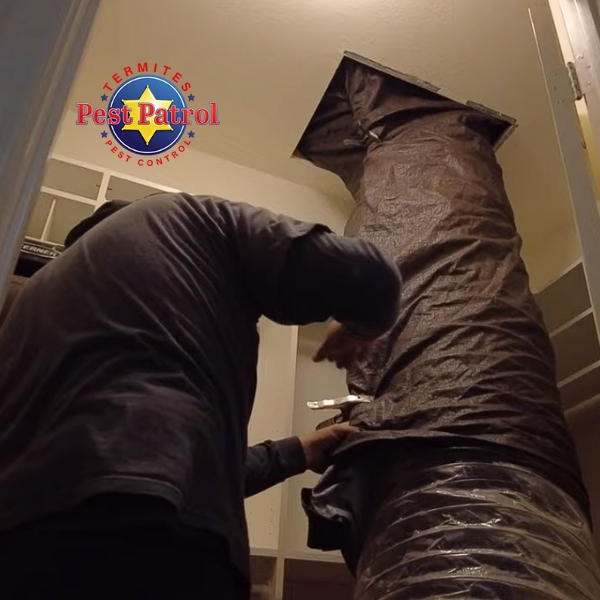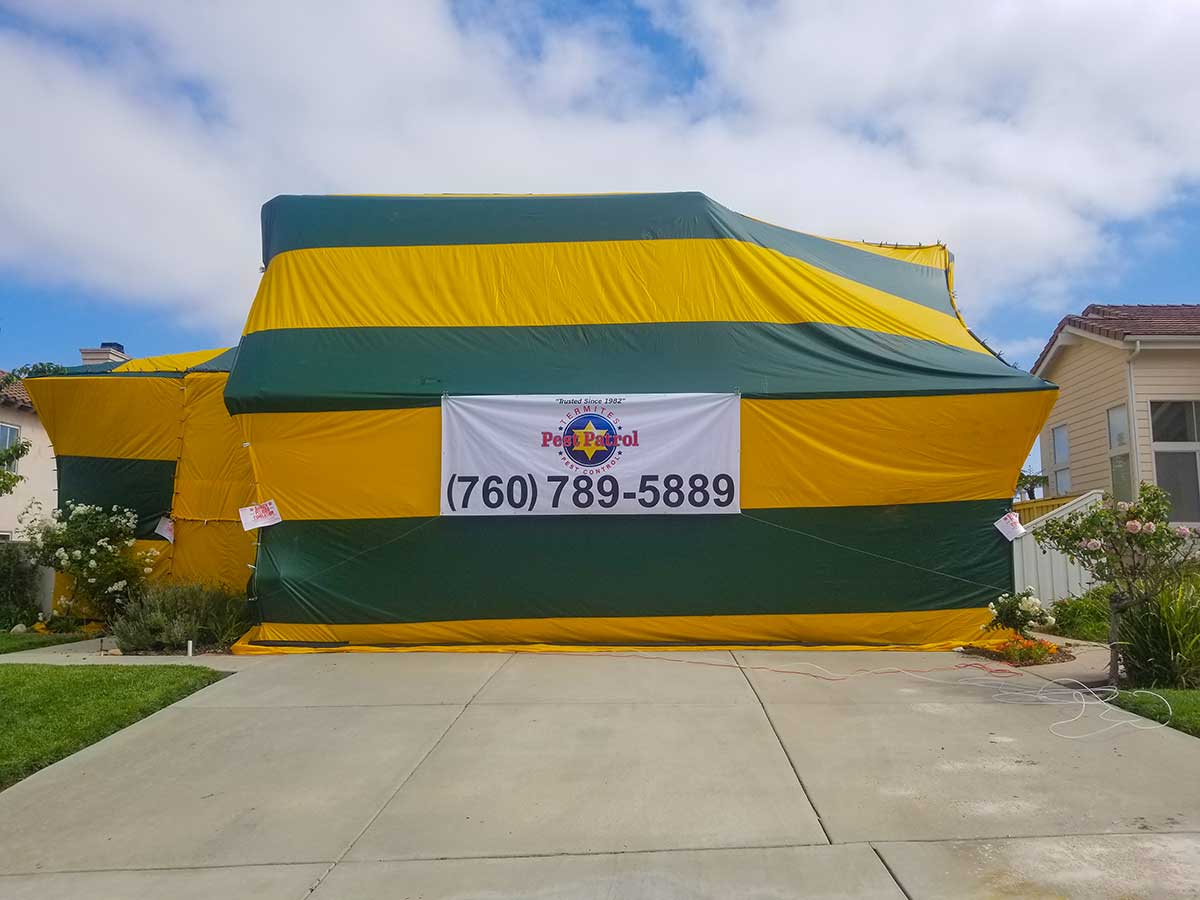A termite infestation can send homeowners into a home repair tailspin if left untreated. Fortunately, there are many different options when it comes to termite treatment depending on the location and scope. Let’s look at the pros and cons as well as the viability of termite heat treatment vs fumigation.
What is Termite Fumigation
Termite fumigation, also called whole house fumigation, is the process of tenting a residence and using a pesticide gas – or fumigant – to eliminate all pests inside. The gas seeps through all the cracks in the structure of the home killing all termites inside walls, under crawl spaces and in attics. All people, pets, and plants must be removed before fumigation. Medicines, food, and anything not sealed in metal or class will be in contact with the fumigant so that needs to be removed as well. Protective bags can be used in special circumstances. Fumigation preparation, termite treatment and aeration can take up to 72 hours so plan on vacating the home for up to three days.
Benefits of Termite Fumigation
The benefits of a whole house termite fumigation is that it is a reliable, complete treatment of the entire home proven to eradicate termites, ants and other general pests. Depending on how long a home has been left untreated, it may have multiple colonies in different areas – some of which may be hidden or hard to reach with a spot treatment.
The downsides of a whole house termite fumigation include the time away from the home, the additional costs, and the health risks associated with exposure to the fumigant. That’s why it is essential to follow the termite fumigation steps provided by your pest control company.
Termite Fumigation Preparation
- Remove all food, drinks, medicine, dry goods that aren’t in sealed glass or metal containers
- Remove all pets, plants, seeds, or bulbs intended for planting
- Mattresses and cushions with plastic covers need to be removed or opened to allow for effective aeration
- Clear away any shrubs or tree branches to allow effective tenting and fumigation
- Notify your pest control company of any conduits, drains, vacuum systems or construction elements that may allow the fumigant to pass from your home to adjoining structures
- Make sure all doors and windows are locked
- Have the gas company shut off your gas
- Allow one to two days of aeration – your pest company should use fans to pull the gas out of your home. They will also measure gas concentration periodically throughout the aeration process.
Once the fumigation process is complete, all surfaces of the home should be wiped down and cleaned. Discard all rags and cleaning supplies.
How long does termite fumigation last? With regular inspections and treatment, a termite fumigation treatment can last 5 years or more. Regular maintenance (removing water sources, sealing cracks, and termite damage repair) can all help keep drywood termites at bay.
Termite fumigation costs can vary depending on square footage, location, termite repairs, and additional prep work required by the termite treatment team upon inspection. Contact us for a free quote and $200 off termite damage repair.
Termite Heat Treatment

Heat treatment for termites is an environmentally friendly, low impact spot treatment that heats up structural elements of your home to eliminate pests. Thermal treatments heat internal wood to 130+ degrees fahrenheit for one to three hours to ensure effective termite control. The entire process takes six to eight hours. Heat treatments are effective for termites, bed bugs, wood destroying organisms like carpenter ants, cockroaches, spiders and other common indoor pests.
Termite Heat Treatment Benefits
Since the process does not rely on pesticides, there is no need to vacate the home or allow for a aeration process following treatment. Thermal heat treatments are an excellent non-chemical alternative to fumigation that is EPA certified. There is also far less preparation required for a termite heat treatment vs fumigation.
Heat Treatment Preparation
- Remove heat sensitive items near the thermal treatment target area – all attic storage items must be removed for attic heat treatments
- Clear any excess clutter or debris that would provide shelter for pests
- Keep pets and loved ones away from the ducting in the home
- In the summer turn off the air conditioner several hours prior to our arrival.
- In the winter turn the heat up, prior to our arrival.
- We will open windows to try and cool the premises down quicker; this may take several hours after the treatment to occur
The decision between termite heat treatment or fumigation depends on several factors. For 100% effective, entire home treatment, a fumigation may be necessary. Treating hard to reach areas or widespread termite infestations for long-term results demand a comprehensive approach. Termite repairs may still be necessary after a fumigation. If a termite inspection only reveals small, isolated termite colonies, a heat treatment may be the ideal scenario. The convenience, safety and cost are all benefits of a thermal termite treatment.

